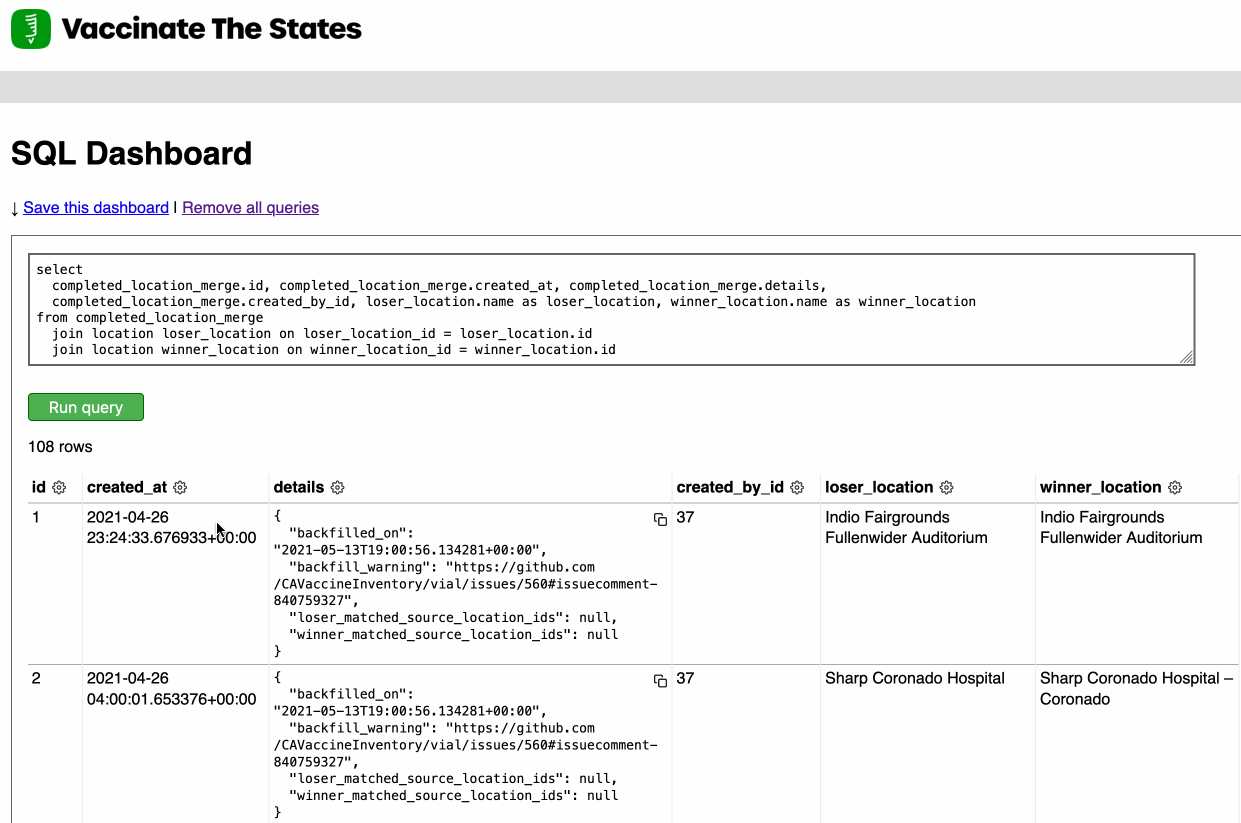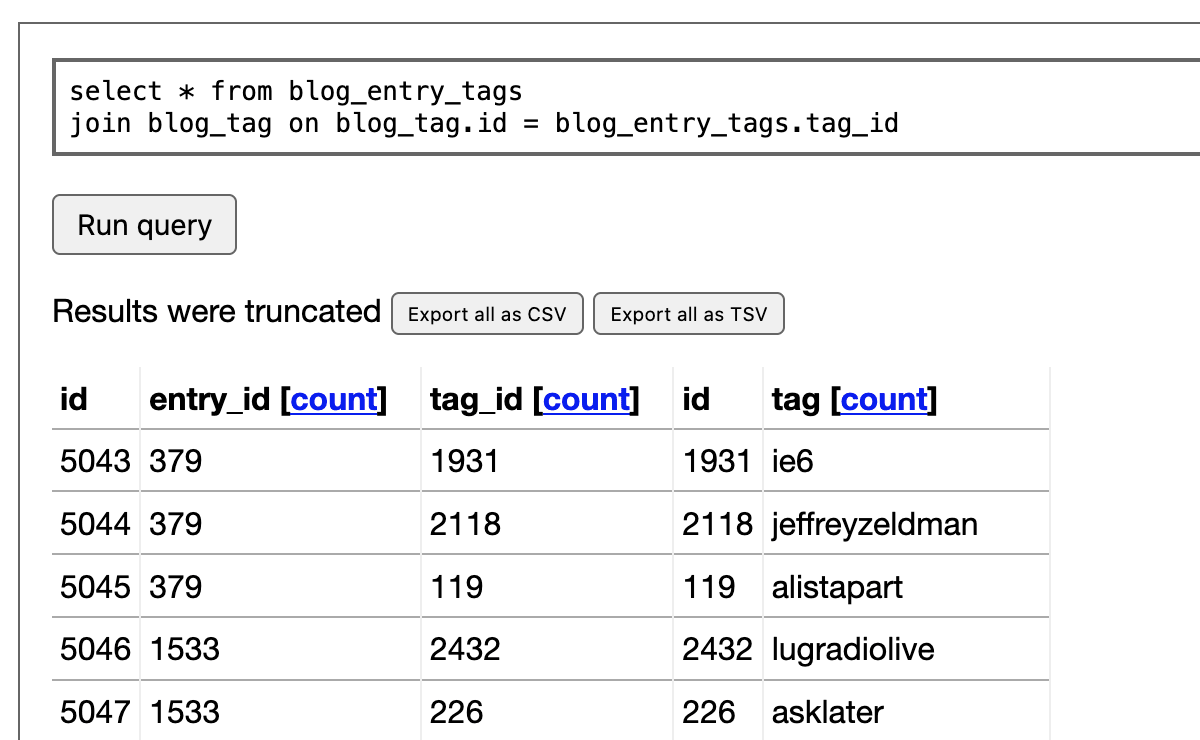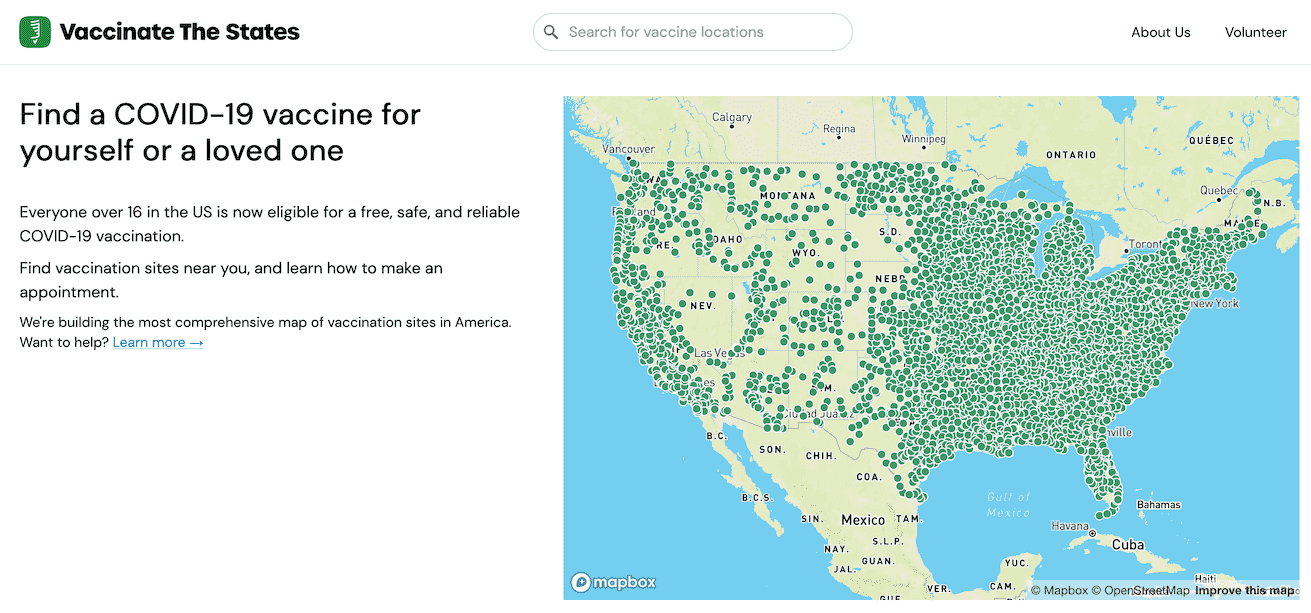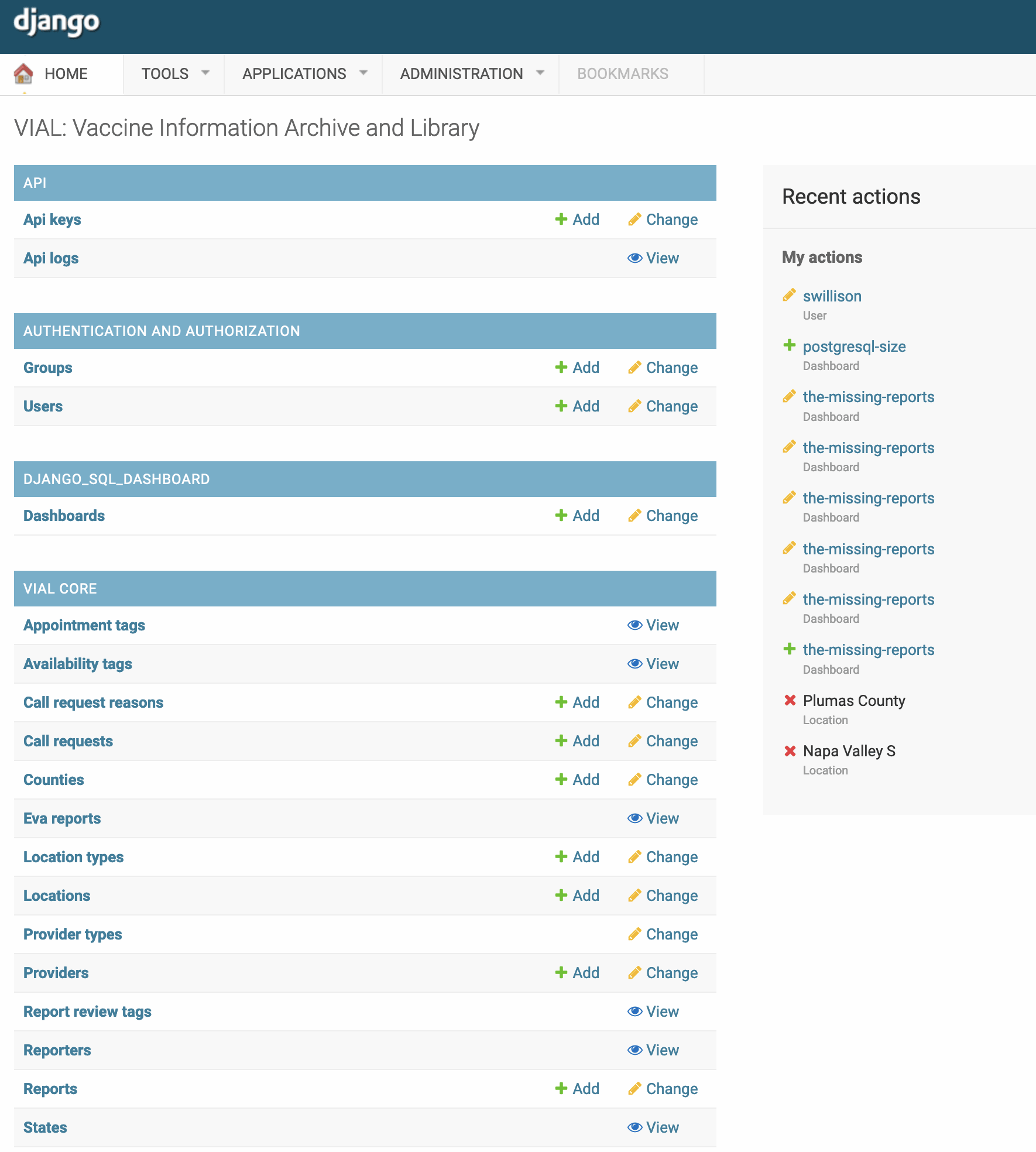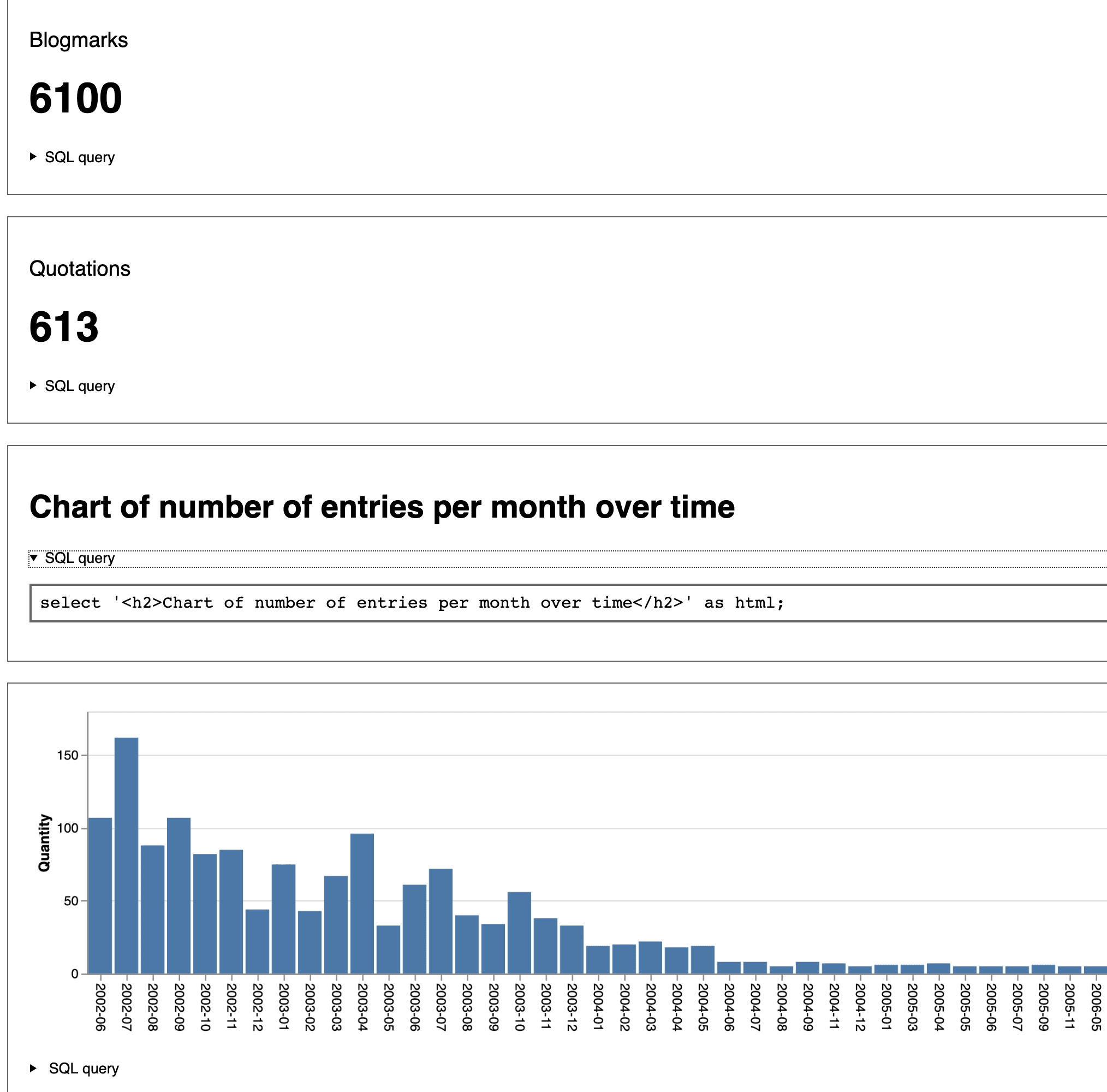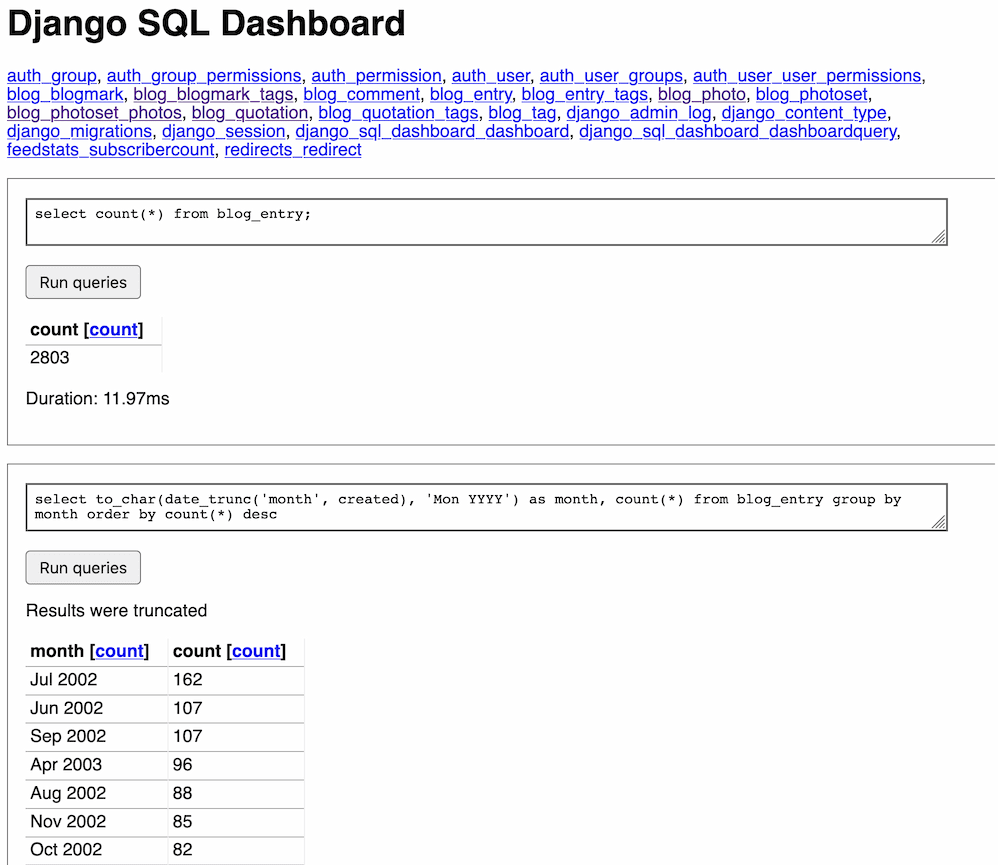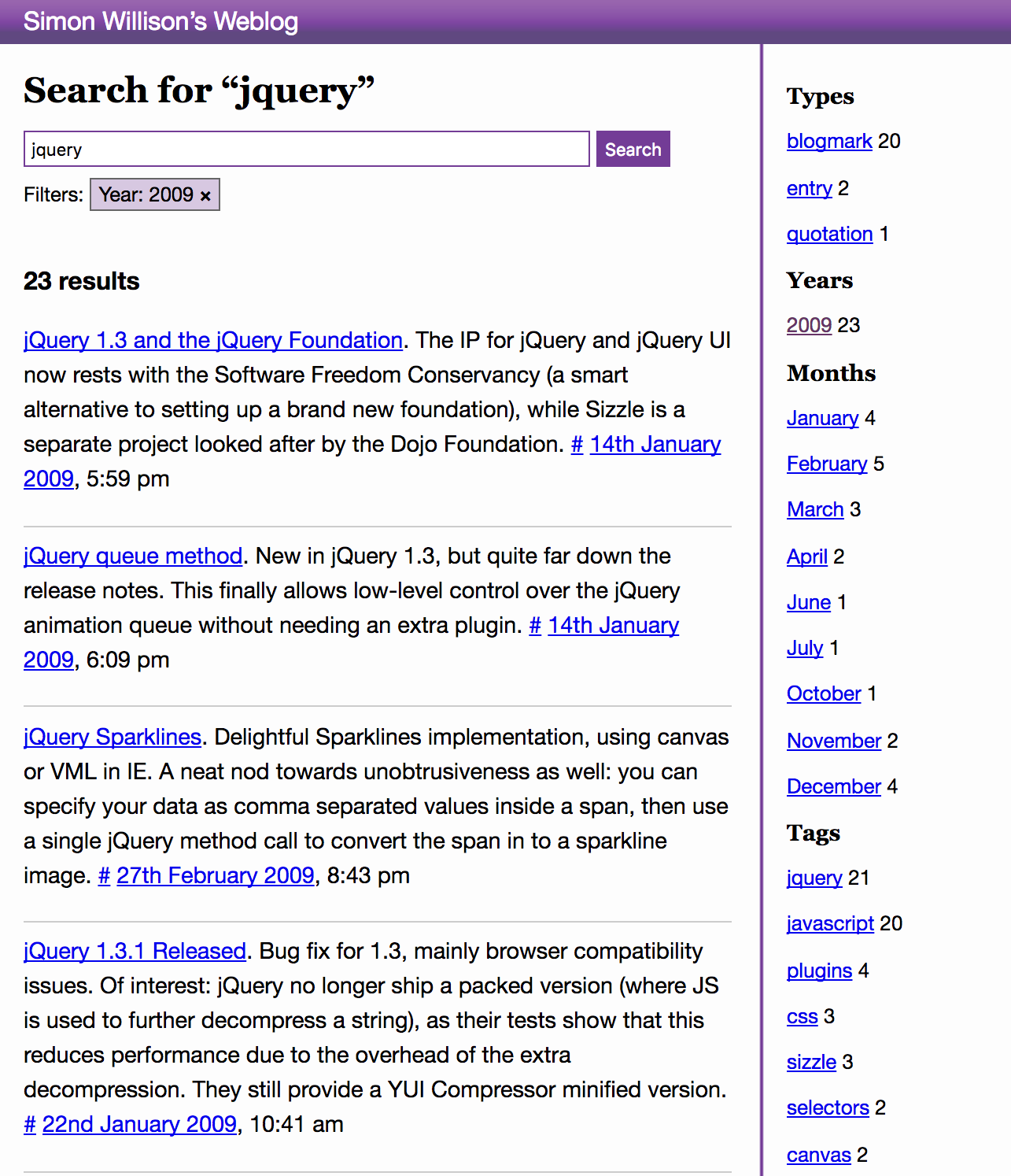Posts tagged django, postgresql
Filters: django × postgresql × Sorted by date
PR #537: Fix Markdown in og descriptions. Since OpenAI Codex is now available to us ChatGPT Plus subscribers I decided to try it out against my blog.
It's a very nice implementation of the GitHub-connected coding "agent" pattern, as also seen in Google's Jules and Microsoft's Copilot Coding Agent.
First I had to configure an environment for it. My Django blog uses PostgreSQL which isn't part of the default Codex container, so I had Claude Sonnet 4 help me come up with a startup recipe to get PostgreSQL working.
I attached my simonw/simonwillisonblog GitHub repo and used the following as the "setup script" for the environment:
# Install PostgreSQL
apt-get update && apt-get install -y postgresql postgresql-contrib
# Start PostgreSQL service
service postgresql start
# Create a test database and user
sudo -u postgres createdb simonwillisonblog
sudo -u postgres psql -c "CREATE USER testuser WITH PASSWORD 'testpass';"
sudo -u postgres psql -c "GRANT ALL PRIVILEGES ON DATABASE simonwillisonblog TO testuser;"
sudo -u postgres psql -c "ALTER USER testuser CREATEDB;"
pip install -r requirements.txt
I left "Agent internet access" off for reasons described previously.
Then I prompted Codex with the following (after one previous experimental task to check that it could run my tests):
Notes and blogmarks can both use Markdown.
They serve
meta property="og:description" content="tags on the page, but those tags include that raw Markdown which looks bad on social media previews.Fix it so they instead use just the text with markdown stripped - so probably render it to HTML and then strip the HTML tags.
Include passing tests.
Try to run the tests, the postgresql details are:
database = simonwillisonblog username = testuser password = testpass
Put those in the DATABASE_URL environment variable.
I left it to churn away for a few minutes (4m12s, to be precise) and it came back with a fix that edited two templates and added one more (passing) test. Here's that change in full.
And sure enough, the social media cards for my posts now look like this - no visible Markdown any more:

suitenumerique/docs. New open source (MIT licensed) collaborative text editing web application, similar to Google Docs or Notion, notable because it's a joint effort funded by the French and German governments and "currently onboarding the Netherlands".
It's built using Django and React:
Docs is built on top of Django Rest Framework, Next.js, BlockNote.js, HocusPocus and Yjs.
Deployments currently require Kubernetes, PostgreSQL, memcached, an S3 bucket (or compatible) and an OIDC provider.
New Django {% querystring %} template tag. Django 5.1 came out last week and includes a neat new template tag which solves a problem I've faced a bunch of times in the past.
{% querystring color="red" size="S" %}
Adds ?color=red&size=S to the current URL - keeping any other existing parameters and replacing the current value for color or size if it's already set.
{% querystring color=None %}
Removes the ?color= parameter if it is currently set.
If the value passed is a list it will append ?color=red&color=blue for as many items as exist in the list.
You can access values in variables and you can also assign the result to a new template variable rather than outputting it directly to the page:
{% querystring page=page.next_page_number as next_page %}
Other things that caught my eye in Django 5.1:
- PostgreSQL connection pools.
- The new LoginRequiredMiddleware for making every page in an application require login.
- The SQLite database backend now accepts init_command for settings things like
PRAGMA cache_size=2000on new connections. - SQLite can also be passed
"transaction_mode": "IMMEDIATE"to configure the behaviour of transactions.
Database generated columns: GeoDjango & PostGIS. Paolo Melchiorre advocated for the inclusion of generated columns, one of the biggest features in Django 5.0. Here he provides a detailed tutorial showing how they can be used with PostGIS to create database tables that offer columns such as geohash that are automatically calculated from other columns in the table.
Writing a chat application in Django 4.2 using async StreamingHttpResponse, Server-Sent Events and PostgreSQL LISTEN/NOTIFY (via) Excellent tutorial by Víðir Valberg Guðmundsson on implementing chat with server-sent events using the newly async-capable StreamingHttpResponse from Django 4.2x.
He uses PostgreSQL’a LISTEN/NOTIFY mechanism which can be used asynchronously in psycopg3—at the cost of a separate connection per user of the chat.
The article also covers how to use the Last-Event-ID header to implement reconnections in server-sent events, transmitting any events that may have been missed during the time that the connection was dropped.
Django SQL Dashboard 1.0
Earlier this week I released Django SQL Dashboard 1.0. I also just released 1.0.1, with a bug fix for PostgreSQL 10 contributed by Ryan Cheley.
[... 629 words]Django SQL Dashboard
I’ve released the first non-alpha version of Django SQL Dashboard, which provides an interface for running arbitrary read-only SQL queries directly against a PostgreSQL database, protected by the Django authentication scheme. It can also be used to create saved dashboards that can be published or shared internally.
[... 2,171 words]Adding GeoDjango to an existing Django project
Work on VIAL for Vaccinate The States continues.
[... 1,503 words]Weeknotes: Vaccinate The States, and how I learned that returning dozens of MB of JSON works just fine these days
On Friday VaccinateCA grew in scope, a lot: we launched a new website called Vaccinate The States. Patrick McKenzie wrote more about the project here—the short version is that we’re building the most comprehensive possible dataset of vaccine availability in the USA, using a combination of data collation, online research and continuing to make a huge number of phone calls.
[... 1,109 words]Porting VaccinateCA to Django
As I mentioned back in February, I’ve been working with the VaccinateCA project to try to bring the pandemic to an end a little earlier by helping gather as accurate a model as possible of where the Covid vaccine is available in California and how people can get it.
[... 2,157 words]Weeknotes: django-sql-dashboard widgets
A few small releases this week, for django-sql-dashboard, datasette-auth-passwords and datasette-publish-vercel.
Weeknotes: tableau-to-sqlite, django-sql-dashboard
This week I started a limited production run of my new backend for Vaccinate CA calling, built a tableau-to-sqlite import tool and started working on a subset of Datasette for PostgreSQL and Django called django-sql-dashboard.
Trying to end the pandemic a little earlier with VaccinateCA
This week I got involved with the VaccinateCA effort. We are trying to end the pandemic a little earlier, by building the most accurate database possible of vaccination locations and availability in California.
[... 1,154 words]Django admin customization, JSON in our PostgreSQL
My progress slowed a bit today as I started digging into some things I’m less familiar with—but I’ve found some tricks that I think will help us out a lot.
[... 1,089 words]Spinning up a new Django app to act as a backend for VaccinateCA
My goal by the end of this week is to have a working proof of concept for a Django + PostgreSQL app that can replace Airtable as the principle backend for the https://www.vaccinateca.com/ site. This proof of concept will allow us to make a go or no-go decision and figure out what else needs to be implemented before we can start using it to track calls.
[... 762 words]PostgreSQL full-text search in the Django Admin. Today I figured out how to use PostgreSQL full-text search in the Django admin for my blog, using the get_search_results method on a subclass of ModelAdmin.
How to Create an Index in Django Without Downtime (via) Excellent advanced tutorial on Django migrations, which uses a desire to create indexes in PostgreSQL without locking the table (with CREATE INDEX CONCURRENTLY) to explain the SeparateDatabaseAndState and atomic features of Django’s migration framework.
django-zombodb (via) The hardest part of working with an external search engine like Elasticsearch is always keeping that index synchronized with your relational database. ZomboDB is a PostgreSQL extension which lets you create a new type of index backed by an external Elasticsearch cluster. Updated rows will be pushed to the index automatically, and custom SQL syntax can then be used to execute searches. django-zombodb is a brand new library by Flávio Juvenal which integrates ZomboDB directly into the Django ORM, letting you add Elasticsearch-backed functionality with just a few lines of extra configuration. It even includes custom Django migrations for enabling the extension in PostgreSQL!
Optimizing Django Admin Paginator. The Django admin paginator uses a count(*) to calculate the total number of rows, so it knows how many pages to display. This makes it unpleasantly slow over large datasets. Haki Benita has an ingenious solution: drop in a custom paginator which uses the PostgreSQL “SET LOCAL statement_timeout TO 200” statement first, then if a timeout error is raised returns 9999999999 as the count instead. This means small tables get accurate page counts and giant tables load display in the admin within a reasonable time period.
Conditional aggregation in Django 2.0 (via) I hadn’t realised how clever this new Django ORM feature by Tom Forbes is. It lets you build an aggregation against a subset of rows, e.g. Client.objects.aggregate(regular=Count(’pk’, filter=Q(account_type=Client.REGULAR)))—then if you are using PostgreSQL it translates it into a fast FILTER WHERE clause, while other databases emulate the same behaviour using a CASE statement.
django-postgres-copy (via) Really neat Django queryset add-on which exposes the PostgreSQL COPY statement for importing (and exporting) CSV data. MyModel.objects.from_csv(“filename.csv”). Built by the team of data journalists at the California Civic Data Coalition.
django-multitenant (via) Absolutely fascinating Django library for horizontally sharding a database using a multi-tenant pattern, from the team at Citus. In this pattern every relevant table includes a “tenant_id”, and all queries should specifically select against that ID. Once you have that in place, you can shard your rows across multiple different databases and route to the correct database based on the tenant ID, safe in the knowledge that joins will still work provided they are against other rows belonging to the same tenant.
Squeezing every drop of performance out of a Django app on Heroku. Ben Firshman describes some lesser known tricks for scaling Django on Heroku—in particular, using gunicorn gevent asynchronous workers and setting up PostgreSQL connection pooling using django-db-geventpool.
How to set up world-class continuous deployment using free hosted tools
I’m going to describe a way to put together a world-class continuous deployment infrastructure for your side-project without spending any money.
[... 1,294 words]Implementing faceted search with Django and PostgreSQL
I’ve added a faceted search engine to this blog, powered by PostgreSQL. It supports regular text search (proper search, not just SQL“like” queries), filter by tag, filter by date, filter by content type (entries vs blogmarks vs quotation) and any combination of the above. Some example searches:
[... 3,103 words]Why is postgresql popular with django?
Partly because the first applications developed on Django (before it was even called Django) used PostgreSQL, so it’s had great PostgreSQL support baked in from the start.
[... 74 words]MapOSMatic. Clever service built on top of OpenStreetMap, which renders double sided city maps with a map and grid on one size and an A-Z street name index on the other. Runs on top of Mapnik, PostGIS and Cairo, with a few thousand additional lines of Python and Django.
Appending the request URL to SQL statements in Django. A clever frame-walking monkey-patch which pulls the most recent HttpRequest object out of the Python stack and adds the current request.path to each SQL query as an SQL comment, so you can see it in debugging tools such as slow query logs and the PostgreSQL “select * from pg_stat_activity” query.
Installing GeoDjango Dependencies with Homebrew. brew update && brew install postgis && brew install gdal
jacobian’s django-deployment-workshop. Notes and resources from Jacob’s 3 hour Django deployment workshop at PyCon, including example configuration files for Apache2 + mod_wsgi, nginx, PostgreSQL and pgpool.
